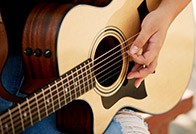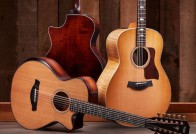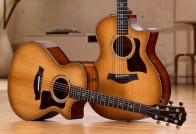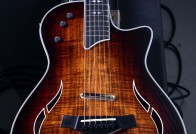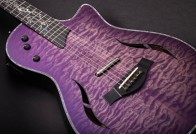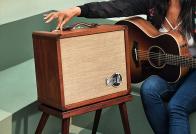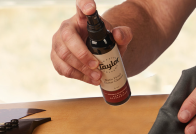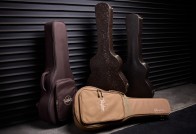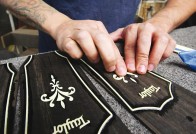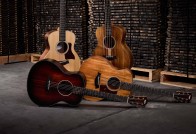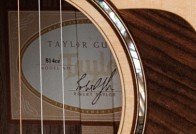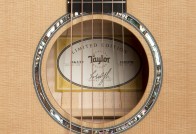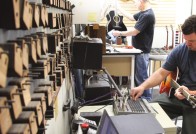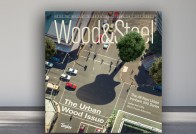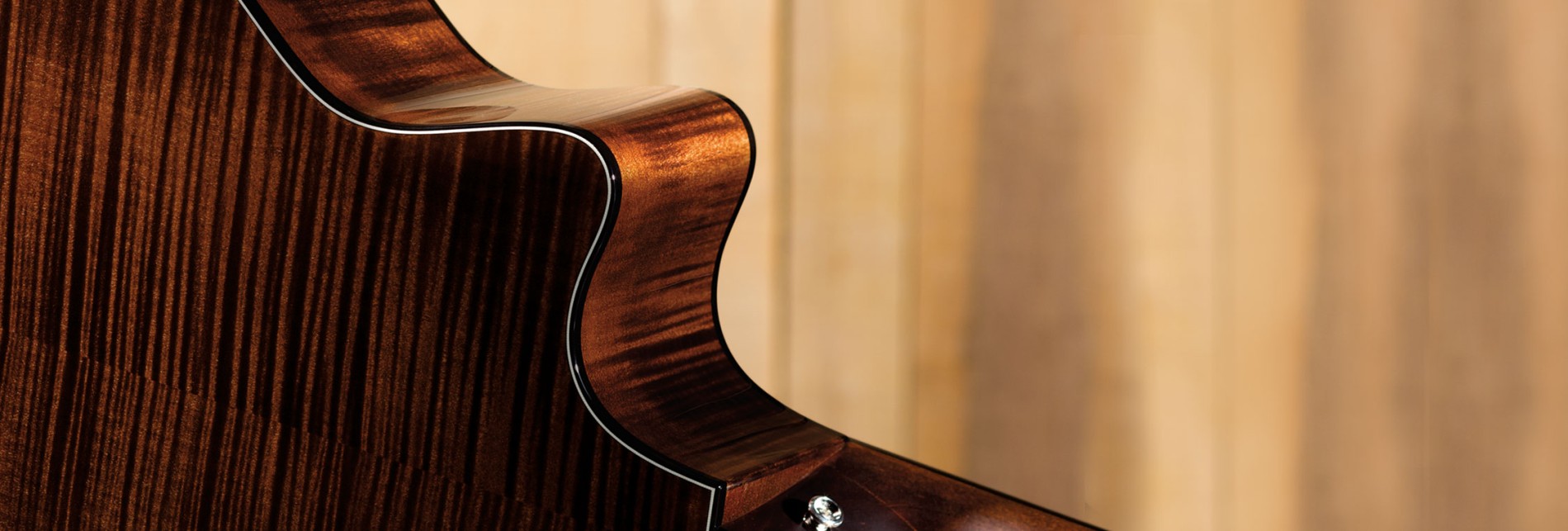
A cutaway is the “scooped” indentation in a guitar’s upper, treble-side bout (near the neck), which allows access to the upper frets. Many electric players accustomed to having a cutaway gravitate toward the familiar feel of a cutaway acoustic guitar, especially if they play lead lines or chords in the upper register. Others simply like the extra musical range a cutaway allows. Cutaways are often favored as much for their aesthetic appeal as for their function. One common question is whether a cutaway diminishes the tonal output of an acoustic guitar in a significant way. The truth is not by much, because that particular portion of the soundboard doesn't drive a lot of the tonal output. The taper of a guitar's waist will actually have more of an impact on tone. Our opinion is that the access you gain to the upper register notes from a cutaway far exceeds the minimal reduction in tonal output. We offer two main cutaway styles: a softer Venetian (with several variations) and a sharper Florentine.
Venetian
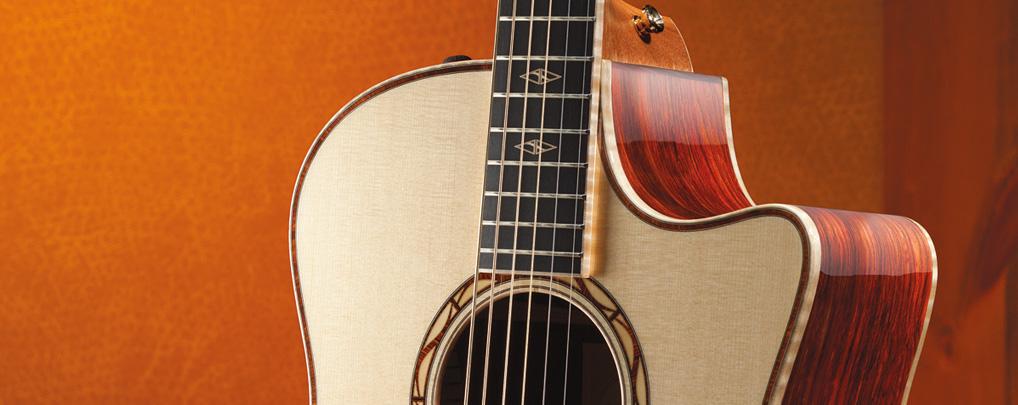
The Venetian cutaway is known for its soft, round lines. The sloping peak of the cutaway will vary depending on the shape of the body. The Grand Concert and Grand Auditorium have a steeper slope, while the Dreadnought is a bit flatter. Our Grand Concert nylon-string models also feature a subtle, flatter slope, while our 200 Series cutaway models incorporate our flattest slope.
Soundport Cutaway
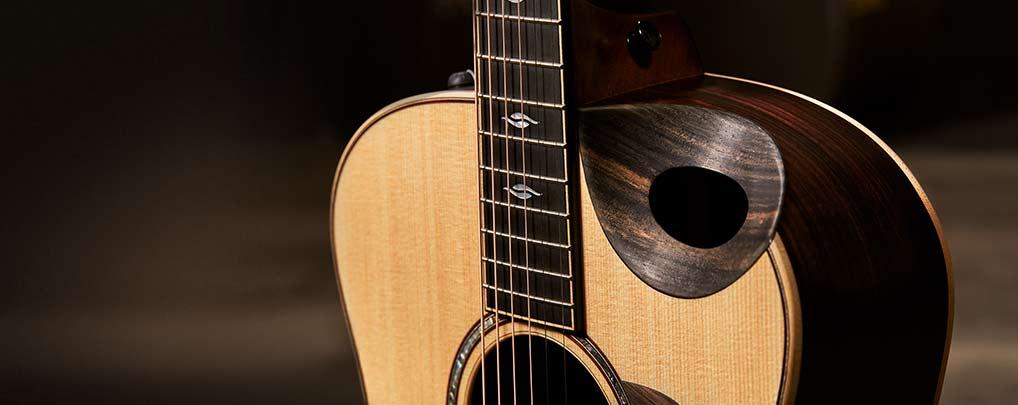
Featured exclusively on Taylor Grand Symphony guitars, the soundport cutaway offers all the accessibility and comfort of a traditional cutaway while helping the guitar produce a more immersive, high-fidelity sound. Aesthetically, it’s a partial Florentine cutaway, and from the front, it resembles the sharp horn of that traditional design. However, the back of the guitar is kept intact, preserving a touch of additional resonance while maintaining a traditional look and feel. The additional soundhole, deliberately placed at roughly a 45-degree angle to the soundboard, adds an extra dimension orchestral, robust acoustic tone, producing a sound that seems to fill the room and resonate in the air around you.
Florentine
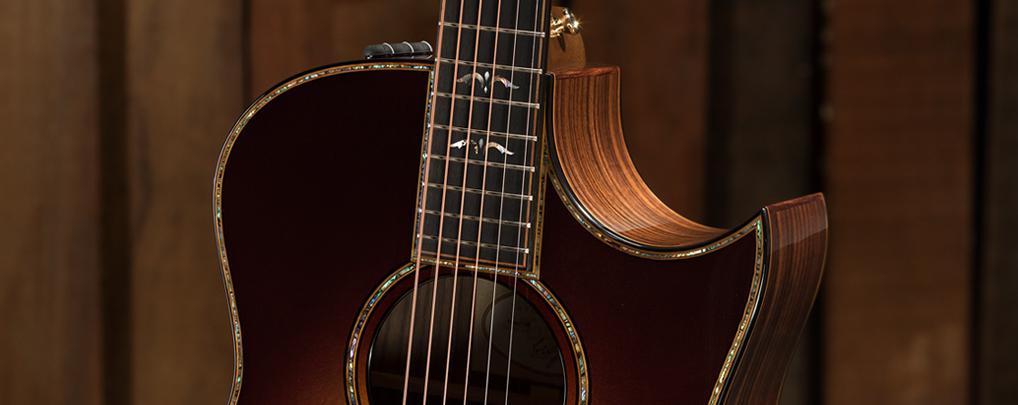
A Florentine cutaway comes to a sharp point, creating a horn-like shape. It is more complex and labor-intensive to craft than the Venetian because the guitar is initially built as a non-cutaway, after which a section of the treble-side upper bout is sliced out. The scooped cutaway is a separate piece of matching wood that is manually bent, fitted and glued into place, with additional trim work required to meet Taylor's high-end aesthetic standards. The Florentine cutaway is commonly used on our Grand Orchestra and Grand Symphony body styles.
Soft Cutaway
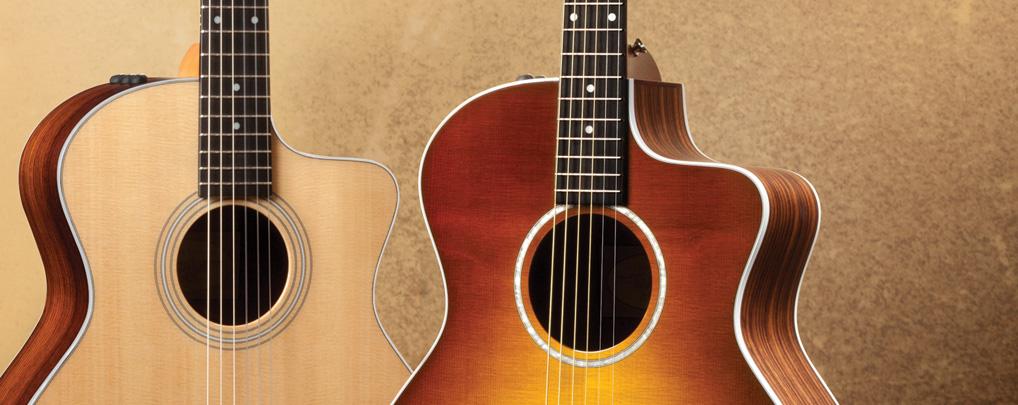
Our soft cutaway has a flatter slope than our standard Venetian style. Grand Concert nylon-string models feature a subtler version.
Beveled Cutaway
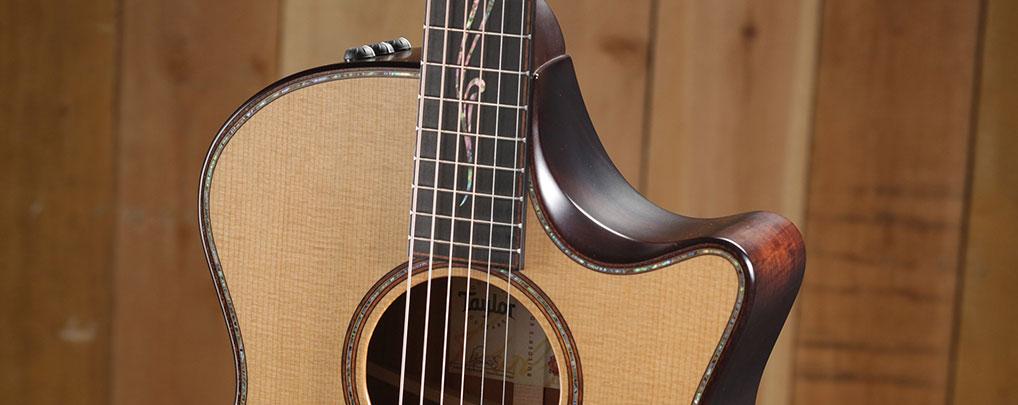
Released as part of the Builder’s Edition line in 2018, our beveled cutaway design provides a more player-friendly feel for guitarists who utilize every inch of the fretboard. It features a compound design with a smoothened edge along the corner of the body between the end of the cutaway and the neck heel, providing a more comfortable feel for the fretting hand. The new cutaway design also incorporates a finger bevel on the guitar’s top, a resting surface for the pinky finger near the highest frets of the guitar. Together, these elements allow the player to reach the entire fretboard without changing hand positions.
Released as part of the Builder’s Edition line in 2018, our beveled cutaway design provides a more player-friendly feel for guitarists who utilize every inch of the fretboard. It features a compound design with a smoothened edge along the corner of the body between the end of the cutaway and the neck heel, providing a more comfortable feel for the fretting hand. The new cutaway design also incorporates a finger bevel on the guitar’s top, a resting surface for the pinky finger near the highest frets of the guitar. Together, these elements allow the player to reach the entire fretboard without changing hand positions.
Non-cutaway
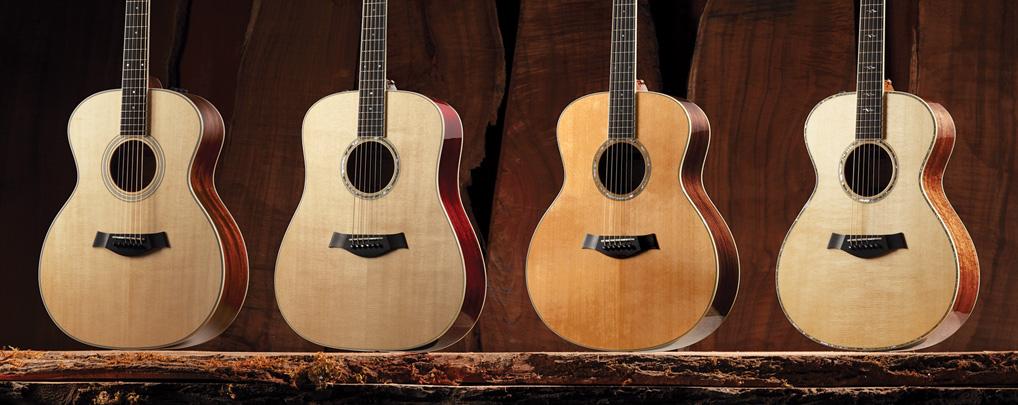
There’s a lot to be said for the clean, traditional look of a non-cutaway acoustic guitar. If you don’t plan to play in the upper register, or simply prefer the symmetrical, figure-eight contours of a guitar, a non-cutaway model is a great option.



